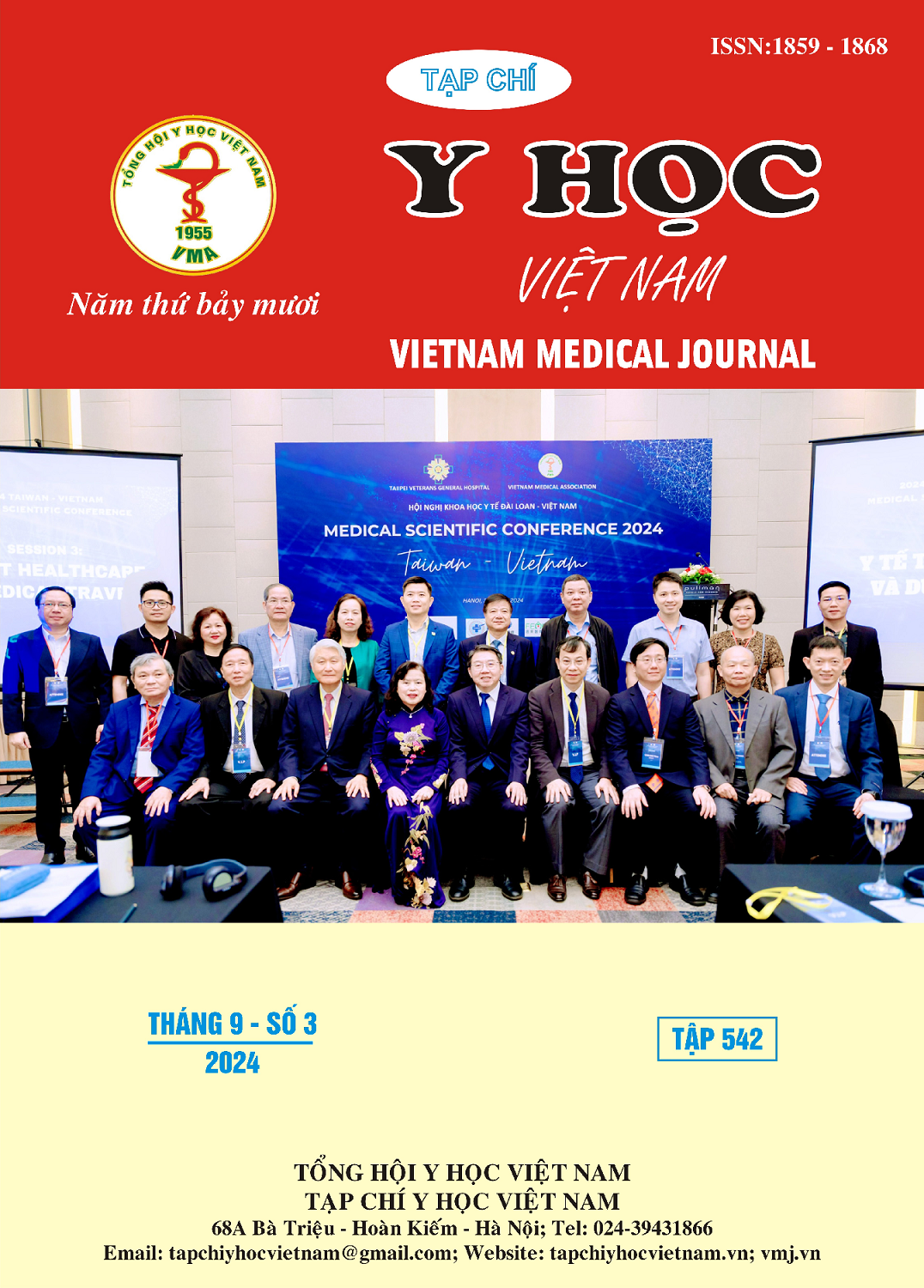EVALUATION OF RECURRENT LARYNGEAL NERVE PALSY IN THORACOLAPAROSCOPIC ESOPHAGECTOMY AND EXTENDED TWO-FIELD LYMPH NODE DISSECTION FOR THE TREATMENT OF ESOPHAGEAL CANCER AT K HOSPITAL
Main Article Content
Abstract
Background: Lymph node around the recurrent laryngeal nerve (RLN) is one of the most challenging group in the lymph node dissection for esophageal cancer. This study aims to evaluate the incidence and factors related to recurrent laryngeal nerve palsy (RLNP) acquired during 3D thoracolaparoscopic esophagectomy and lymph node dissection for esophageal squamous cell carcinoma. Subjects and methods: Prospective descriptive study at K Hospital from October 2022 to March 2024 on patients with esophageal squamous cell carcinoma undergoing 3D thoracolaparoscopic esophagectomy and extended two-field lymph node dissection. Results: The incidence of grade II RLNP is 8.3%. After an average follow-up period of over 6 months, 76.9% of cases recovered completely. All of RLNP is on the left side. Age, BMI, mean intensive care unit stay and hospital stay did not differ between the two groups. It was noted that the group of patients who had preoperative chemoradiotherapy had a statistically significant higher rate of RLNP (p = 0.015; RR = 4.7; 95% CI = 1.3 - 17.0). Conclusion: The incidence of grade II RLNP is 8.3%. RLNP is related to preoperative chemoradiotherapy. It is necessary to apply technical improvements with a unified procedure in lymph node dissection around the RLN.
Article Details
Keywords
Esophageal squamous cell carcinoma, 3D thoracolaparoscopic esophagectomy, recurrent laryngeal nerve palsy.
References
2. Sheikh M, Roshandel G, McCormack V, Malekzadeh R. Current Status and Future Prospects for Esophageal Cancer. Cancers. 2023;15(3):765. doi:10.3390/cancers15030765
3. Chiu CH, Wen YW, Chao YK. Lymph node dissection along the recurrent laryngeal nerves in patients with oesophageal cancer who had undergone chemoradiotherapy: is it safe? Eur J Cardiothorac Surg. 2018;54(4):657-663. doi:10.1093/ejcts/ezy127
4. Guo Q, Li H, Wang H, Zhang D, Li Y. Effects of standard and total two-field lymph node dissection on prognosis of patients undergoing Esophagectomy. Pak J Med Sci. 2022;38(4Part-II):950-954. doi:10.12669/pjms.38.4.4031
5. Matsuda S, Takeuchi H, Kawakubo H, Kitagawa Y. Three-field lymph node dissection in esophageal cancer surgery. J Thorac Dis. 2017;9(Suppl 8):S731.
6. Katayama H, Kurokawa Y, Nakamura K, et al. Extended Clavien-Dindo classification of surgical complications: Japan Clinical Oncology Group postoperative complications criteria. Surg Today. 2016;46:668-685. doi:10.1007/s00595-015-1236-x
7. Scholtemeijer MG, Seesing MFJ, Brenkman HJF, Janssen LM, Hillegersberg R van, Ruurda JP. Recurrent laryngeal nerve injury after esophagectomy for esophageal cancer: incidence, management, and impact on shortand long-term outcomes. J Thorac Dis. 2017;9(Suppl 8). doi:10.21037/jtd.2017.06.92
8. Otsuka K, Murakami M, Goto S, et al. Minimally invasive esophagectomy and radical lymph node dissection without recurrent laryngeal nerve paralysis. Surg Endosc. 2020;34:2749-2757.
9. Jeon YJ, Cho JH, Lee HK, et al. Management of patients with bilateral recurrent laryngeal nerve paralysis following esophagectomy. Thorac Cancer. 2021;12(12):1851-1856. doi:10.1111/ 1759-7714.13940
10. Wang K, Tepper JE. Radiation therapy-associated toxicity: Etiology, management, and prevention. CA Cancer J Clin. 2021;71(5):437-454. doi:10.3322/caac.21689


